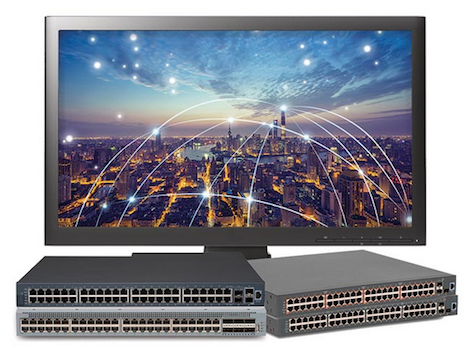
Networking is the backbone of any video surveillance system. While servers, workstations, and cameras remain vital, the best network switches reduce outages, grant quicker access to information, and easily integrate new communication channels and applications. Yet, when the server begins to drop frames, the first instinct of most technical professionals is to drop camera frame rate, resolution, bitrate, or even add more servers. The network equipment is typically overlooked. This oversight often leads to continued outages. Listed below are the three most common reasons security integrators have networking issues.
1. Poor Network Configuration
Network management for video surveillance can often overwhelm network administrators. This quickly becomes problematic when setting up a new network for IP-based cameras because the performance level perceived by the end user is associated with the actual video feed getting to the VMS application uninterrupted. Ensuring a lossless, end-to-end video feed relies upon proper network configuration. A simple network configuration like Shortest Path Bridging (SPB) significantly reduces video latency. Whereas, complex protocols like PIM or Spanning Trees limit a network?s flexibility and performance.
All too often, security integrators allow a specialized networking engineer to build a complex, inefficient network that has numerous touch points, including at the core, increasing the risk to core components and operational expenses to maintain the network.
2. Bandwidth Bottleneck
Often mistakenly associated with underperforming servers, video surveillance data often creates a bottleneck within the network due to the immense load put on networking switches. Bandwidth, a limited resource, becomes overrun by the large volume of data and causes video feeds to go black or lag. Due to low tolerance for packet loss, video surveillance systems cannot afford to be down for long.
Mismatched hardware selection is a common cause of insufficient bandwidth availability. For example, if a Gigabit Ethernet port from a server connected to a switch port offering a legacy 10/100 Ethernet Port will cause a bottleneck to the server. Storage design flaw is another leading cause of data slowdowns. When multiple four-gigabit storage devices connect to the same switch port to maximize bandwidth usage, performance problems will occur if all storage devices are active simultaneously.
3. Pricing
Brand-name distributors significantly upcharge their network switches while failing to deliver any additional value, or in some cases, use outdated protocols limiting network performance. As a result, these expensive switches require maintenance contracts to sustain limited performance. On the other end of the spectrum, cheap alternatives cannot handle the volume of data video surveillance requires and use inefficient legacy protocols.
Networking Solution
Dynamic, agile, and resilient networking comes from eliminating network-wide provisioning and implementing simple end-point provisioning requiring only one or two lines of code. Such a solution reduces human error, increases deployment speed, and quickly adapts to camera changes. The BCDVideo Titan Networking Series powered by Avaya combines SPB and lightning reconvergence to create an optimized networking solution for almost any surveillance project.
By simplifying the setup process and enabling multipath routing, sub-second recovery times for both unicast and multicast become possible. An integrated Virtual Router and Forwarding option cuts bandwidth concerns by isolating video surveillance traffic from the other corporate IT traffic while remaining on the same physical network.
Simplified network configuration, bandwidth segmentation, and economical pricing highlight the Titan Series as the complete network solution.
Source: bcdvideo.com
